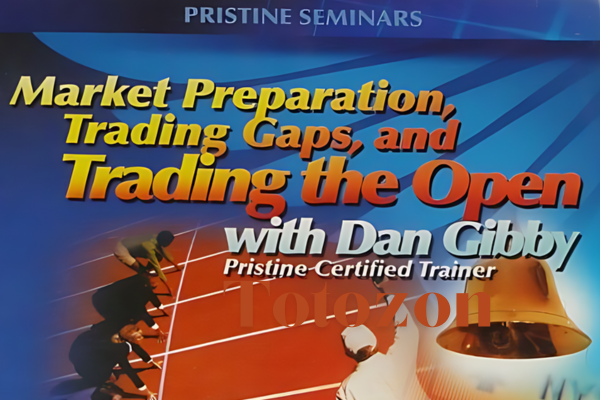Pristine – Dan Gibby – Market Preparation Trading Gaps & Trading the Open
$6.00
File Size: Cooming soon!
Delivery Time: 1–12 hours
Media Type: Online Course
Content Proof: Watch Here!
You may check content proof of “Pristine – Dan Gibby – Market Preparation Trading Gaps & Trading the Open” below:

Pristine – Dan Gibby – Market Preparation Trading Gaps & Trading the Open
Introduction to Trading Gaps and the Open
Effective market preparation is key to successful day trading. Dan Gibby’s teachings at Pristine emphasize mastering trading gaps and the open, crucial concepts for any trader aiming to capitalize on market opportunities from the very start of the trading session.
Understanding Trading Gaps
A gap occurs when a stock opens at a price significantly different from its previous close. This can provide unique opportunities and risks.
Types of Gaps
- Breakaway Gaps: Signify the start of a new trend.
- Exhaustion Gaps: Indicate the end of a price pattern.
- Common Gaps: Often get filled quickly; less significant for long-term trends.
Preparing for the Market Open
Analyzing Pre-Market Conditions
Understanding the pre-market activity is essential to anticipate the opening price movements accurately.
Importance of Pre-Market Analysis
- Sentiment Gauge: Offers clues about the market mood.
- Volume Study: High pre-market volume can indicate significant interest.
The Role of News and Events
News releases and economic events can heavily influence the opening market behavior, creating gaps and volatility.
Staying Informed
- Economic Calendars: Keeping track of important events.
- News Alerts: Reacting quickly to news that can impact stock prices.
Strategies for Trading Gaps
Strategy 1: Gap and Go
This strategy involves identifying strong gap up or down movements and trading in the direction of the gap.
Execution Tips
- Entry Points: Entering after a small retrace or consolidation post-gap.
- Exit Points: Setting profit targets at previous resistance or support levels.
Strategy 2: Gap Fill
Some gaps tend to fill as prices return to the previous day’s closing level. This strategy capitalizes on that movement.
Trading the Gap Fill
- Identifying Potential: Gaps in stocks with less volatility are more likely to fill.
- Risk Management: Essential to define stop-loss levels clearly.
Trading the Open
Understanding Market Orders and Liquidity
The first minutes after the market opens are often the most volatile. Knowing how to handle this can make a significant difference.
Techniques for Effective Opening Trades
- Market Orders: Quick execution but at the cost of price certainty.
- Limit Orders: Control over price but may result in missed opportunities.
Volatility Management
Handling the opening volatility requires a clear strategy and nerves of steel.
Controlling Risk
- Position Sizing: Smaller positions to mitigate risk.
- Quick Decisions: Being prepared to act swiftly on market movements.
Tools for Market Preparation
Charting Software and Real-Time Data
Access to reliable charting tools and real-time data is indispensable for analyzing gaps and planning trades.
Recommended Tools
- Technical Indicators: For spotting patterns and support/resistance levels.
- Real-Time News Feeds: For immediate reaction to market-moving news.
Psychological Aspects of Trading the Open
Mental Readiness
Being mentally prepared for the fast-paced nature of trading at the open is as important as any strategy.
Building Mental Resilience
- Routine Development: Establishing a pre-market routine to enhance focus.
- Stress Management Techniques: Keeping calm under pressure.
Conclusion
Dan Gibby’s approach to trading gaps and the open provides traders with the tools and strategies necessary for taking advantage of early market movements. By preparing adequately and adhering to disciplined trading strategies, traders can enhance their chances of success in the volatile opening hours.
Frequently Asked Questions
- What is a trading gap? A trading gap occurs when a stock opens at a price either higher or lower than its previous close, without any trading occurring between these prices.
- How do you trade a gap? Gap trading strategies can include trading in the direction of the gap (gap and go) or trading towards the previous close (gap fill), depending on the market conditions and gap type.
- What is the best strategy for trading the open? The best strategy depends on the trader’s risk tolerance and the specific market conditions each day, though it often involves understanding and reacting to the initial volatility.
- How important is pre-market preparation? Pre-market preparation is crucial as it sets the stage for understanding potential price movements and planning strategies accordingly.
- Can anyone trade gaps and the open? While anyone can trade gaps and the open, it requires careful preparation, quick decision-making, and an understanding of market fundamentals.
Be the first to review “Pristine – Dan Gibby – Market Preparation Trading Gaps & Trading the Open” Cancel reply
You must be logged in to post a review.
Related products
Forex Trading
Forex Trading
Forex Trading
Forex Trading
Forex Trading
Forex Trading
Forex Trading
Forex Trading
Forex Trading
Forex Trading























Reviews
There are no reviews yet.